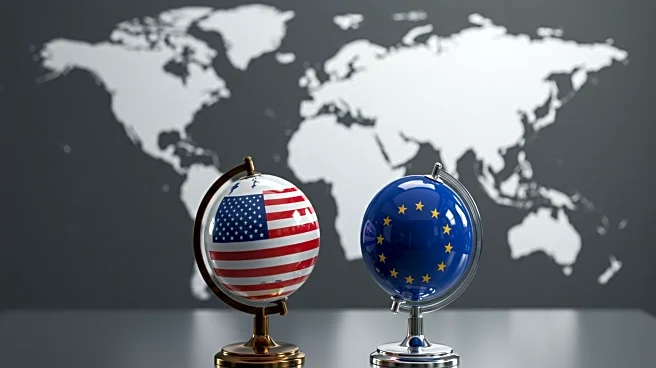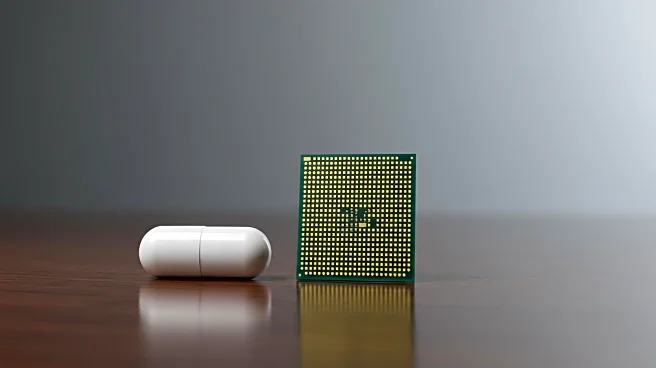Rapid Read • 8 min read
The United States and European Union have finalized a trade agreement that outlines tariffs on various sectors, including autos, pharmaceuticals, and semiconductors. The agreement sets a 15% blanket tariff on EU exports to the U.S., while the EU commits to purchasing $750 billion worth of U.S. energy and investing an additional $600 billion in the U.S. The deal has been described as the most favorable trade agreement extended by the U.S. to any partner, with plans to expand market access and strengthen economic ties. The agreement also includes provisions for eliminating tariffs on U.S. industrial goods and providing preferential access for U.S. seafood and agricultural products.
AD
The trade agreement between the U.S. and EU is significant for both economies, as it aims to enhance trade relations and boost economic growth. The tariffs on pharmaceuticals and semiconductors are particularly noteworthy, as they impact key industries in both regions. The agreement could lead to increased investment and job creation in the U.S., while providing the EU with access to U.S. energy resources. The deal also reflects broader geopolitical dynamics, as the U.S. seeks to strengthen ties with European partners amid global trade tensions. The agreement's focus on energy and defense procurement highlights strategic priorities for both regions.
The implementation of the trade agreement will involve monitoring compliance with tariff provisions and investment commitments. Both the U.S. and EU will need to address any challenges that arise from the agreement, such as potential disputes over tariff rates or market access. The deal may also prompt other trading partners to seek similar agreements with the U.S., leading to further negotiations and adjustments in global trade policies. The focus on energy and defense procurement could lead to increased collaboration in these sectors, with potential implications for security and sustainability.
The trade agreement raises questions about the balance between free trade and protectionism, as tariffs impact industry competitiveness and consumer prices. The focus on energy procurement reflects broader concerns about energy security and sustainability, as both regions seek to diversify their energy sources. The agreement also highlights the role of trade in shaping geopolitical alliances and economic strategies, as the U.S. and EU navigate complex global dynamics. Long-term, the deal could influence trade policies and economic relations beyond the U.S. and EU, impacting global trade patterns and economic growth.
AD
More Stories You Might Enjoy










